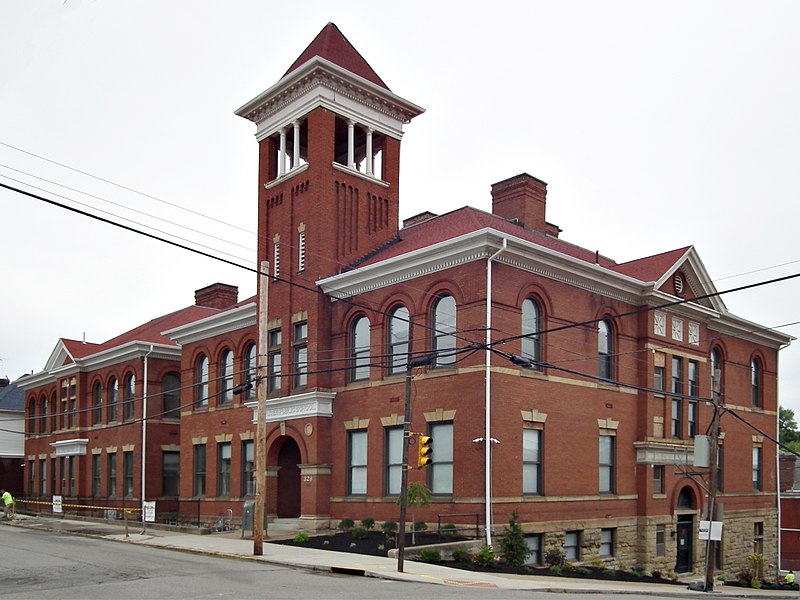
Mount Oliver is having a bit of a revival these days. Luckily it never declined far enough to start losing buildings in its main commercial strip here on Brownsville Road, so the street is still lined with uninterrupted shops from Arlington Avenue to Bausman Street. For a while a considerable number of them were empty, but they are filling up again. The building at left with the green awning is the old Murphy’s variety store; it is now being made into artists’ studios by the couple who own the trendy Echt coffeehouse around the corner.
It is hard to explain Mount Oliver to people outside the hilltop neighborhoods of southern Pittsburgh. It is completely surrounded by the city of Pittsburgh, but it is an independent borough, the sole holdout when the back slopes of Mount Washington were annexed by the city. Its residents pay taxes to the borough government, but also to the city school system, because Mount Oliver buys its schooling from Pittsburgh. To make things a little more confusing and surreal, one of the adjacent neighborhoods of Pittsburgh is called “Mount Oliver,” but it is part of the city, not part of the borough. Street signs at what pass for major intersections in that second Mount Oliver identify it as “Mount Oliver Neigh,” so your horse can read them.












